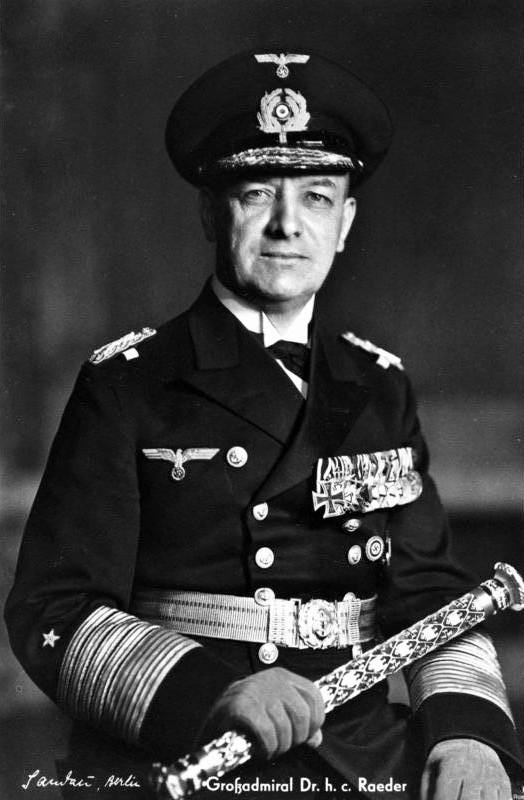Civil War Echoes: Erich Raeder’s Navy
Raphael Semmes published his Memoirs of Service Afloat During The War Between The States in 1869, providing a far-ranging discussion of the Confederate naval war and his role in it as a commerce raider, squadron commander, and field commander. This book so impressed Germany’s Kaiser Wilhelm II that he made it required reading among his senior naval officers. The book influenced discussions and debates before World War I about how the weaker German Navy could confront a stronger foe. One of the key debaters was the Chief of Staff of the Battlecruiser Fleet, a man named Erich Raeder.
From 1928 to 1943 Raeder ran the German Navy and took it into World War II. Caught off-guard by the start of the war in September 1939 (naval plans expected it in 1944 or 1945), and facing much stronger opponents, he was forced into much the same situation as the Confederates in 1861. Raeder adopted a similar strategy to the one the Confederate Navy used during the Civil War. In many ways it was a very close mirror.
First, Raeder’s Navy went after Allied shipping and economic lifelines. This meant submarine wolf packs, but also a robust surface effort. German surface warships sortied to engage Allied convoys and sink merchant ships, with varying degrees of success. The four most well-known examples of this are:
– Exercise Berlin in January-February 1941, when the battleships Scharnhorst and Gneisenau sank 116,000 tons of Allied shipping
– The Graf Spee operations in the South Atlantic, sinking 50,000 tons of British shipping
– Exercise Rhine in May 1941, deploying the battleship Bismarck and cruiser Prinz Eugen into the North Atlantic
– The Murmansk convoy sorties of 1942 and 1943, especially the operation against Convoy PQ 17
The German Navy also borrowed a tactic directly from the Confederacy: the armed merchant cruiser. Ten of these disguised merchant ships (descendents of Alabama, Shenandoah, Florida, and their cousins) roamed the globe preying on enemy shipping. The most successful raider was Bernhard Rogge’s Atlantis with 22 ships taken; she also made a major intelligence coup with the capture of SS Automedon in 1940.
Raeder’s strategy additionally focused on breaking an Allied North Sea blockade; this was the genesis of the Norwegian invasion of 1940, and part of the reason the bulk of the German surface fleet was concentrated in Norway from 1942 onward, causing great concern to the British Admiralty and preventing an effective cordon.
Just as the German Army before World War II studied the Civil War’s land operations for lessons and inspiration, so did the German Navy build on the experience of the Union and Confederate navies. The echoes of those lessons can be found in Erich Raeder’s strategy and tactics from 1939 to 1943.
Top: Bismarck fires on the British warships Hood and Prince of Wales, 24 May 1941 (US Navy photo)
Bottom Left: Grand Admiral Erich Raeder (Bundesarchiv)
Bottom Right: Bernhard Rogge of Atlantis, shown as a Vice Admiral (Bundesarchiv)


